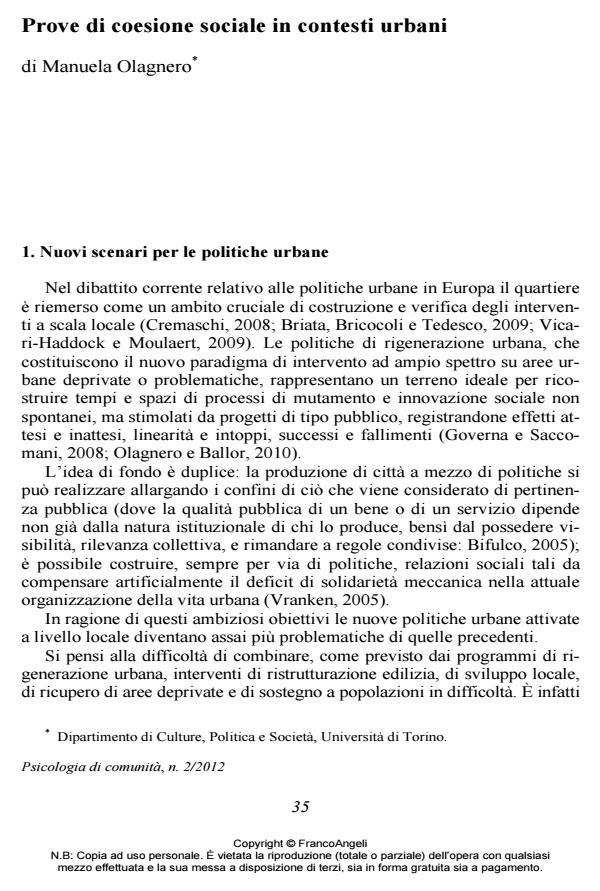Prove di coesione sociale in contesti urbani
Journal title PSICOLOGIA DI COMUNITA’
Author/s Manuela Olagnero
Publishing Year 2013 Issue 2012/2
Language Italian Pages 12 P. 35-46 File size 350 KB
DOI 10.3280/PSC2012-002004
DOI is like a bar code for intellectual property: to have more infomation
click here
Below, you can see the article first page
If you want to buy this article in PDF format, you can do it, following the instructions to buy download credits

FrancoAngeli is member of Publishers International Linking Association, Inc (PILA), a not-for-profit association which run the CrossRef service enabling links to and from online scholarly content.
In current theoretical and policy debate concerning urban regeneration in Europe, the neighbourhood has re-emerged as an important setting. The aim of the study is to gain a greater insight into the outcome of urban regeneration program realized in a neighbourhood in Turin. Evidence is offered from a survey on orientations and behaviours concerning social relationships in the area, after two years from the intervention. The core question of the paper is whether and how the effect of cohesion and cooperation among people living in the same area has not verified, as expected from the social mix program. The paper argues about mechanisms explaining the partial failure of this experiment, focusing on the experience of daily inclusion/exclusion from a specific shared place.
Keywords: Cooperation, social cohesion, social mix, urban experience, urban regeneration.
Manuela Olagnero, Prove di coesione sociale in contesti urbani in "PSICOLOGIA DI COMUNITA’" 2/2012, pp 35-46, DOI: 10.3280/PSC2012-002004